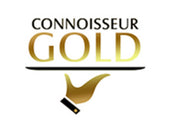Gold Leaf Across the World - France
- by sam@wrightsoflymm.co.uk User
In France, gold leaf is called "Feuille d'or" (literally "gold leaf"). When referring to edible gold leaf, it is often called "Feuille d'or comestible" or "Or alimentaire" (meaning "food-grade gold" or "edible gold").
It is commonly used in haute cuisine, pâtisserie, and luxury beverages, maintaining its status as a symbol of elegance and prestige.
The History and Uses of Edible Gold Leaf in France
Edible gold leaf has been a symbol of opulence and prestige for centuries, adorning fine cuisine and confections worldwide. In France, a country renowned for its culinary artistry and luxury, gold leaf has played a significant role in haute cuisine, patisserie, and even beverages. From the lavish banquets of the French monarchy to modern-day Michelin-starred restaurants, edible gold leaf continues to be a hallmark of sophistication and refinement.
The use of edible gold dates back to ancient civilizations such as Egypt and Rome, where it was believed to have divine and medicinal properties. By the Middle Ages, gold leaf had become a common feature in European banquets, particularly among the aristocracy and clergy. The extravagant courts of the Renaissance further embraced the trend, incorporating gold into feasts as a symbol of wealth and status.
France, in particular, saw the rise of edible gold leaf during the reign of Louis XIV, the Sun King, who was famous for his lavish lifestyle and grand feasts at the Palace of Versailles. Gold was used to decorate elaborate dishes, sweet delicacies, and even wines, creating an aura of decadence that defined the era. The tradition continued through the 18th and 19th centuries, as France solidified its reputation as the epicenter of haute cuisine.
Modern Uses of Edible Gold Leaf in France
Today, edible gold leaf remains an essential element in French gastronomy, found in fine dining, pastry arts, beverages, and even cosmetics. While its primary purpose is aesthetic, gold leaf continues to be associated with luxury and celebration.
1. Haute Cuisine and Fine Dining
French chefs, particularly those in Michelin-starred restaurants, frequently use edible gold to elevate their dishes. From gilded foie gras to gold-dusted truffles, edible gold enhances both the visual appeal and perceived value of gourmet cuisine. Dishes such as gold leaf covered Wagyu beef or gold leaf garnished seafood platters are often served at exclusive restaurants catering to affluent clientele.
Notably, the French concept of “la grande cuisine”—a refined approach to cooking that emphasizes presentation—aligns perfectly with the use of gold leaf. It is applied delicately to main courses, sauces, and even amuse-bouches, enhancing their elegance without overpowering the dish’s natural flavours.
2. Patisserie and Chocolaterie
France’s world-famous patisserie and chocolaterie industry extensively incorporates edible gold in desserts. High-end pastry chefs use gold leaf to decorate éclairs, macarons, mille-feuille, and opera cakes, adding a touch of grandeur to traditional French confections.
Luxury chocolatiers in Paris, such as Pierre Hermé and La Maison du Chocolat, sell gold dusted pralines and truffles, offering an indulgent experience for chocolate lovers. Wedding cakes and special occasion pastries also frequently feature edible gold, symbolizing prosperity and elegance.
3. Beverages: Champagne, Cocktails, and Spirits
Gold leaf is a common feature in French luxury beverages, particularly in champagne and liqueurs. Some high-end champagne brands, such as Gold Cuvée, infuse their bottles with suspended gold flakes, creating a visually stunning effect that enhances celebrations.
Cocktail bars in Paris and other major cities serve gold garnished cocktails, such as gold rimmed martinis and champagne spritzers, catering to a clientele seeking unique and extravagant experiences. Gold-infused spirits, including cognac and absinthe, are also popular among connoisseurs.
4. Culinary Traditions and Festive Celebrations
In France, edible gold leaf is often associated with special occasions, such as weddings, anniversaries, and high-profile events. It is commonly used in celebratory desserts, including the Galette des Rois (King’s Cake), a traditional pastry enjoyed during Epiphany. While the cake traditionally contains a fève (a small charm), some modern versions are adorned with gold leaf for an added touch of elegance.
Additionally, gold leaf is sometimes used in nougat, candied fruits, and marzipan creations, particularly during Christmas and New Year celebrations.
5. Skincare and Wellness Industry
Beyond the culinary world, edible gold leaf has found its way into luxury skincare and wellness products in France. Many high-end French beauty brands, such as Guerlain and Dior, incorporate gold into face creams, serums, and masks, claiming anti-aging and skin-rejuvenating properties.
Click here to see our range of Gold Leaf for use in beauty and skincare
Some gourmet shops sell gold-infused honey and teas, marketed as detoxifying or energizing products. This reflects the growing trend of luxury wellness in France, where gourmet food and self-care intersect.
Conclusion
France’s long-standing association with luxury and fine dining has made edible gold leaf a cherished ingredient in its culinary traditions. From the extravagant feasts of Versailles to the delicate artistry of modern patisserie, gold leaf continues to symbolize sophistication, celebration, and exclusivity. Whether adorning a Michelin-starred dish, a handcrafted chocolate, or a glass of champagne, edible gold leaf remains an integral part of France’s rich gastronomic heritage.





